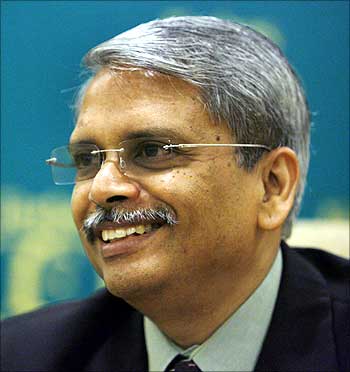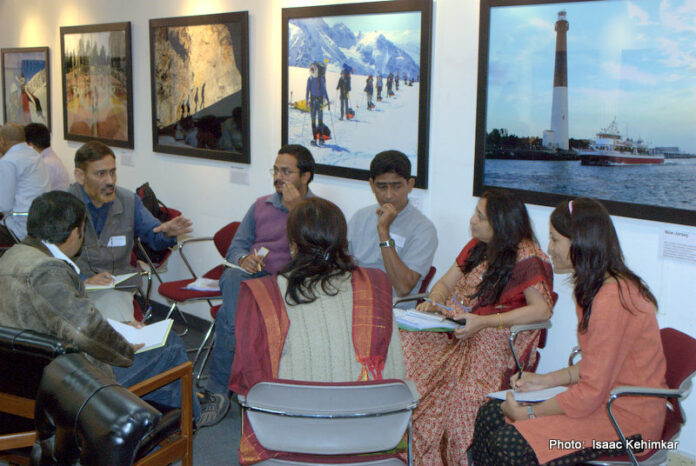भारत की कंपनियां अब जनता की भलाई के कामों पर सीधे सीधे – करीब 24000 करोड़ रुपये ख़र्च करेंगी. आपको यह जानकर आश्चर्य भले हो मगर – कंपनी अधिनियम की नई धारा 134 के मुताबिक अब उन सभी कंपनियों को सीएसआर यानि – कॉर्पोरेट सामाजिक दायित्व के तहत अपने मुनाफ़े का 2 फ़ीसदी धन सीधे जनता के सरोकार से जुड़े काम-काज पर ख़र्च करना ही होगा जो इसके दायरे में आएंगी.
धारा 134 के दायरे में आनेवाली कंपनियां
- जिनकी शुद्ध संपत्ति 1000 करोड़ रूपये या उससे अधिक की होगी – या –
- जिनका कारोबार 500 करोड़ रूपये या उससे अधिक का हो – या –
- जिनका शुद्ध मुनाफ़ा 50 करोड़ या उससे अधिक का हो
इन सभी पैमानों में से यदि किसी एक पैमाने पर भी कोई कार्पोरेट खरा उतरता है तो उसे अपने – शुद्ध मुनाफ़े का कम से कम दो प्रतिशत हिस्सा सीएसआर यानि सामाजिक दायित्व के काम पर ख़र्च करना ही होगा.
मशहूर रिसर्च कंपनी केपीएमजी के एक अनुमान के मुताबिक – इस नए कानून के दायरे में करीब 16000 कंपनियां आएंगी और करीब 24000 करोड़ रूपये सीधे जनता के भलाई के काम खर्च भी होगा. कानून बनने के बाद अब इसके दायरे में आनेवाली तमाम कंपनियों को अपनी सालाना आर्थिक रिपोर्ट के साथ साथ ही – अपने सामाजिक दायित्व के कामकाज की रिपोर्ट भी कार्पोरेट मंत्रालय में भेजनी होगी – इतना ही नहीं इस रिपोर्ट को उन्हें सार्वजनिक भी करना होगा और ऐसा न करने पर उनकी जवाबदेही बनेगी.
क्या होंगे सामाजिक दायित्व के काम
ऐसा भी नहीं है कि सिर्फ कानून का पालन करने के लिए कंपनियां अनाप-शनाप काम करके अपने सामाजिक दायित्व की खानापूर्ति कर सकेंगी. नए अधिनियम के चैप्टर सात के तहत कार्पोरेट मंत्रालय ने सीएसआर के कामकाज की पूरी लिस्ट भी जारी कर दी है. इसके तहत –
- भूख, ग़रीबी और कुपोषण को दूर करना, स्वास्थ्य देख-भाल और स्व्छता को बढ़वा देना एवं पीने सा साफ़ पानी उपल्ब्ध कररवाना
- बच्चों, बूढ़ों, अपंग और महिलाओं में शिक्षा और ख़ासकर रोज़गार कौशल निखारनेवाली एवं शिक्षा को बढ़ावा देना, आजीविका के नए साधन उपल्बध करानेवाली योजनाएं
- लिंग समानता, महिला सशक्तिकरण, महिला छात्रावास, बृद्धाश्रम बनवाना, अनाथालय बनवाना, वरिष्ठ नागरिकों के लिए डे केअर सेंटर खोलना, सामाजिक एवं आर्थिक रुप से पिछडे़ समाज की असमानता को दूर करनेवाली योजनाएं
- पर्यावरण का बचाव एवं संतुलन, जीव-जंतूओं एवं वनस्पतियों का संरक्षण, को बचाना, पशु कल्याण, कृषि वानिकी, प्राकृतिक संसाधनों का संरक्षण तथा जल, वायु और मिट्टी की गुणवत्ता को बनाए रखनेवाली योजनाएं
- राष्ट्रीय धरोहरों का संरक्षण, कला एवं संस्कृति के संरक्षण के तहत – ऐतिहासिक महत्व की इमारतों एवं कलाकृतियों का पुनरुत्थान, पब्लिक लाइब्रेरी का निर्माण, पारंपरिक कला एवं हस्तशिल्प का प्रमोशन और विकास भी शामिल है.
- सेना से रिटायर सैनिकों, युद्ध की विधावाओं और उनके आश्रितों के फ़ायदे के लिए किए गए उपाय
- ग्रामिण खेलकूद, राष्ट्रीय मान्यताप्राप्त खेलकूद, पैराओलंपिक खेलकूद, और ओलंपिक खेलकूदों को प्रमोट करने के लिए ट्रेनिंग देना
- प्रधानमंत्री राहतकोष योजना, या सामाजिक एवं आर्थिक रुप से पिछड़े समुदायों, अनुसूतियों, अनुसूचित जनजातियों, माइनॉरीटी, और महिलाओं के कल्याण एवं राहत के लिए बनाए गए केंद्रीय कोष में दिया गया दान
- केंद्रीय मान्यताप्राप्त शैक्षणिक संस्थाओं में टेक्नोलॉजी इनक्यूबेटरों के लिए दिया गया दान
- ग्रामीण विकास की योजनाएं

सरकार ने इन तमाम कार्यकलापों की खुले विचारों से व्याख्या करने की सलाह दी है – मतलब ये कि कंपनियां नियम के तहत दी गई गतिविधियों को लेकर कंफ्यूज़ ना हों और अगर उन्हें लगता है कि कोई सामाजिक कार्य सीएसआर की मूल भावना से प्रेरित है तो उस काम को भी वो अपने कार्पोरेट सामाजिक दायित्व की योजनाओं में शामिल कर सकती हैं.
कुछ अन्य दिशा-निर्देश
- अगर किसी एक वर्ष में किसी वजह से सीएसआर के तहत जमा किया गया फंड पूरी तरह से खर्च नहीं हो पाता है तो बचा हुआ धन कंपनी का मुनाफ़ा नहीं माना जाएगा – बल्कि अगले साल के सीएसआर फंड में अगल से जोड़ दिया जाएगा.
- इसी तरह किसी सीएसआर प्रोजेक्ट से कोई नफ़ा होता है तो उसे भी दोबारा सीएसआर के काम में ही लगाना होगा.
- कंपनी के आम कारोबार में ज़रुरी कोई योजना जो भले ही सामाजिक हो – उसे सीएसआर नहीं माना जाएगा – मसलन फैक्ट्री लगाने के लिए हटाए गए लोगों का रिहैबिलिटेशन या रोज़गार देना सीएसआर नहीं होगा.
- दो या अधिक कंपनियां मिलकर साझा सीएसआर कार्यक्रम चला सकती हैं – बशर्ते सभी कंपनियों का योगदान उनके शुद्ध मुनाफ़े के दो फीसदी से कम ना हो.
- कंपनियां खुद या किसी एजेंसी के ज़रिए अपना सीएसआर विभाग चला सकती हैं – लेकिन इसे स्थापित करने का ख़र्च उनके कुल सीएसआर खर्च के 5 फीसदी से ज्यादा नहीं हो सकता.
- इसी तरह सीएसआर के लिए काम कर रहे कर्मचारियों और वॉलिंटिअर्स का वेतन सीएसआर के खर्च का हिस्सा माना जाएगा.
- राजनीतिक दलों को दिया गया चंदा सीएसआर नहीं माना जाएगा
विदेशों में किया गया सामाजिक कार्य भारत में सीएसआर के तहत मान्य नहीं होगा. वहीं भारत में काम कर रही विदेशी कंपनियां भी सीएसआर के दायरें में शामिल हैं. हर कार्पोरेट को अपने सीएसआर के कामकाज का पूरा ब्यौरा कंपनी की वेबसाइट पर प्रकाशित करना होगा. कंपनियों को सीएसआर के कामकाज की निगरानी और योजना तैयार करने के लिए एक तीन सदस्यों वाली कमीटी का भी गठन करना होगा – जिसमें एक इंडिपिंडेंट डायरेक्टर भी शामिल होगा – हालांकि नीजी एवं अनलिस्टेड पब्लिक कंपनियों पर इंडिपिंडेंट डायरेक्टर रखने की बाध्यता नहीं होगी.
भारत में सीएसआर अधिनियम वित्तिय वर्ष 2014-15 से लागू हो चुका है, हालांकि उम्मीदों के मुताबिक बजट के दौरान इसपर कोई नए दिशानिर्देश नहीं जारी किए गए. ये ज़रुर कहा गया है कि सालभर बाद वो हालात और नियमों का जायज़ा लेने के बाद, सभी पक्षों से बातचीत करके ही निगरानी और नियंत्रण के मसलों पर फैसले लेगी.


























